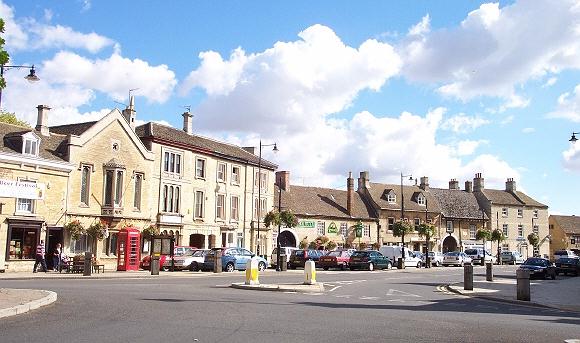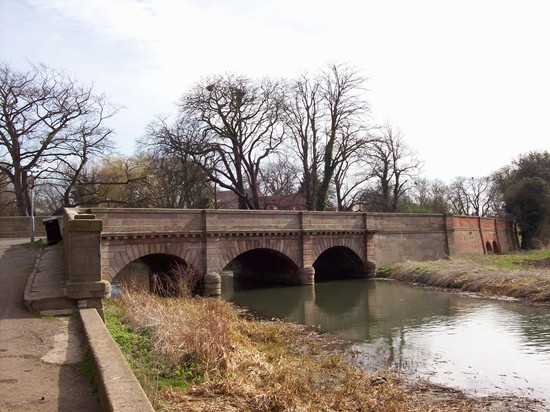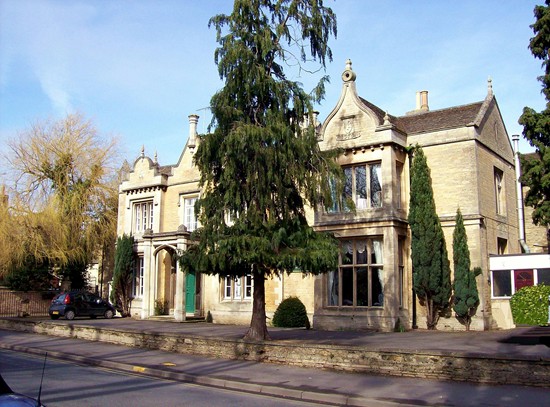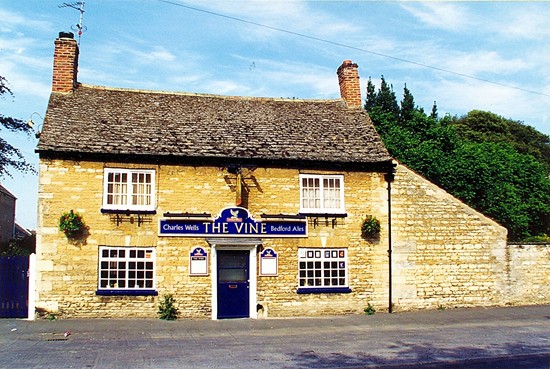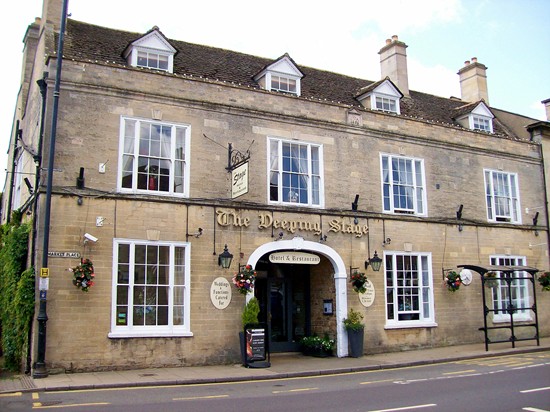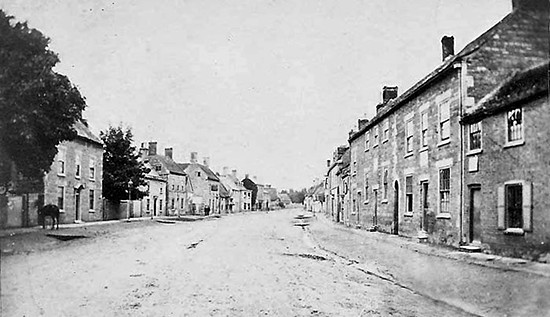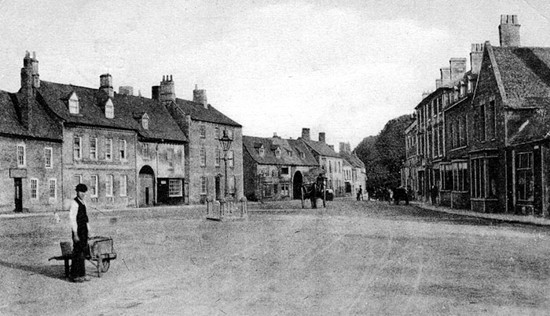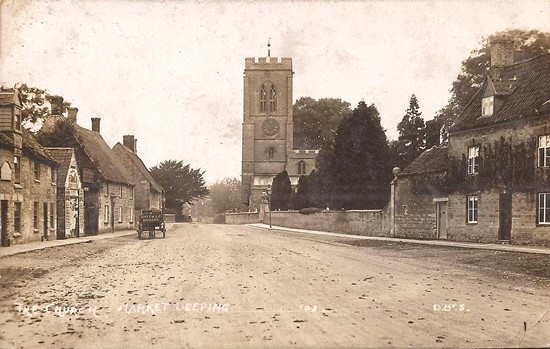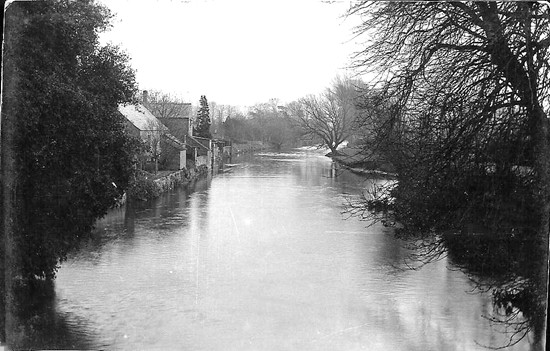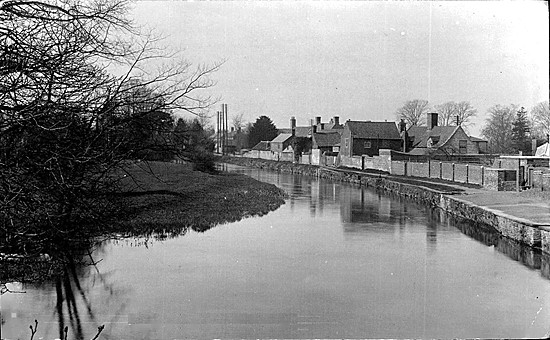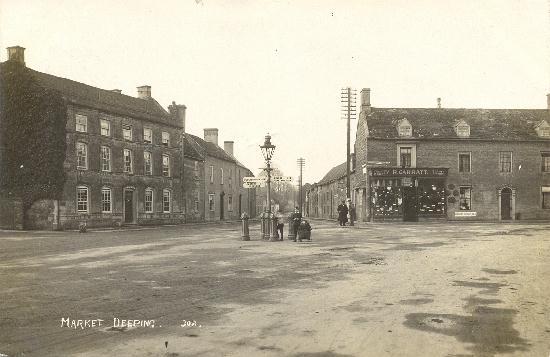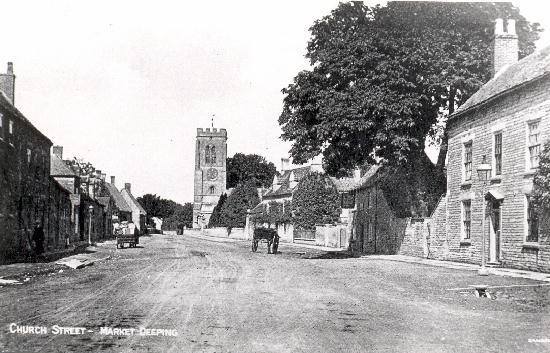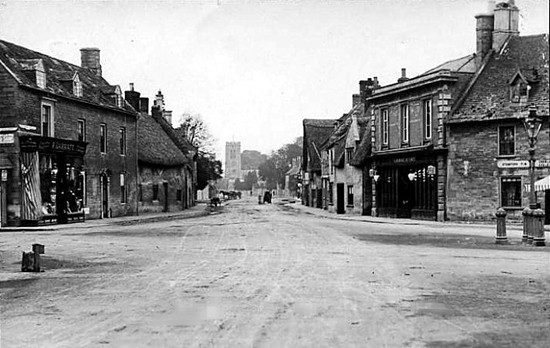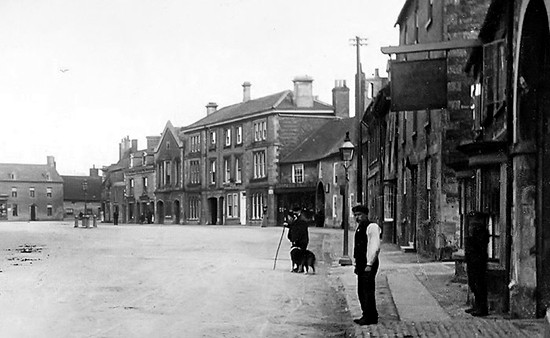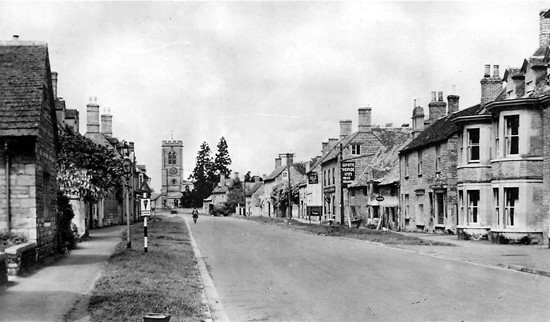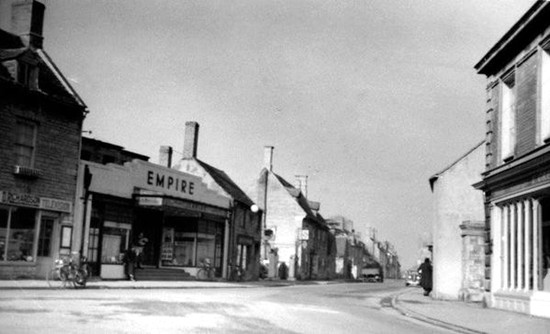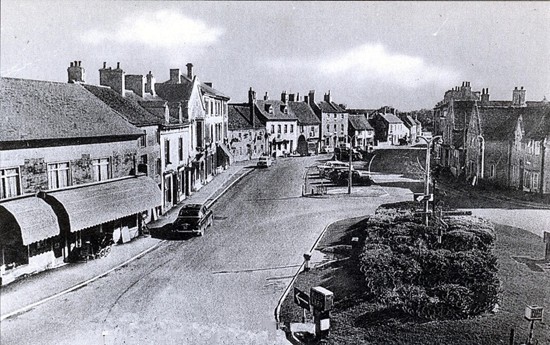|
Market Deeping
The market place that you see here today is modern, being completed in April 2001at a cost of £500,000 to make it more amenable for shoppers and vehicles. The project was part of a local enhancement scheme, worked out over several months and funded by Lincolnshire County Council, South Kesteven District Council and English Heritage. A decade before, the traditional market, which had started to decline in 1885, was moved off the streets to a nearby pedestrian precinct in the interests of road safety and so the area has finally lost its connections with the past, although most of the historic buildings remain to provide an attractive period facade. Three annual fairs that were once held here are also no more. These had been held for cattle on the second Wednesday after May Day and on October 10th, along with one "chiefly for wood" on the last Wednesday in July. It was most probably the loss of these fairs that led to the town's decline in the late 19th and early 20th centuries, a process that has in recent years been dramatically reversed because today, Market Deeping flourishes. The rest of this town's name, together with the other Deepings, serves as a reminder of a place in the deep meadows liable to flooding by the River Welland from time immemorial.
The stone bridge that carries that A15 over the River Welland at Market Deeping
was opened in July 1842 and the firm that built it was made bankrupt by the
contract. The total cost was £8,000 but this also included the purchase of
several houses in the vicinity that were removed in order to widen the
approaches to the bridge and the first vehicle to cross was the Lincoln Royal
Mail stage coach. There had been a middle row of houses in the market place, now
used as a car park, but these had just been demolished and some of the bricks
were used in the construction of the bridge and can still be seen. A town hall is recorded in Market Deeping as early as 1563 when it was also used as a court house but new premises on the same site were proposed in the early 19th century and the public was invited to help foot the bill. Across the road, the new police station of 1880 was erected on the site of an earlier house that was demolished to make way for the building. The Stamford Mercury reported on Friday 28th May that year: Kesteven police station is now completed and occupied by Inspector Pawson. It is a well constructed stone building, slated, and stands in a commanding position, viz. in the Market Place at the foot of the Welland Bridge, on the high road to Bourne, Peterborough, Stamford and Spalding. There are two cells, in place of the long used miserable and unhealthy dens in the Town Hall. A room is provided for magistrates to meet in and a commodious house for the resident officer. The site was formerly occupied by a house many years the property of Mr [John] Molecey, and long in the occupation of Mrs [Elizabeth] Alderman, baker, and known as "Alderman's Corner". On an oak beam spanning one of the lower rooms was carved the date "1636, June" but the building was undoubtedly of a much earlier date and in the Elizabethan style. Several copper coins and curious tobacco pipes were found during the demolition. In the new building, the style of architecture of the old house, with its stone mullions, is judiciously retained. The masonry has been done by Mr F C Stimson, builder, of Market Deeping, and the woodwork by Mr Samuel Charity, of Deeping St James; Mr Charles Kirk, of Sleaford, the county architect and surveyor, superintending. Church Street, Market Deeping, is regarded as one of the prettiest in Lincolnshire with old stone buildings on either side, many dating back to the 17th century and as you drive north on the A15, the embattled tower of St Guthlac's Church is directly ahead. These houses tell the story of the village over the years and one, known as the Old Curiosity Shop, was for a long time a popular call for collectors of antiques but has now been converted for use as a private house. This street is so evocative of times past that it once had three different antique shops, attracting dealers from London, the Continent and beyond.
The street also contains three of the town's remaining public houses. A century ago there were nine, one for every 134 of the population whereas the ratio today is one for every 620 residents. The White Horse is still open as is the Vine further up with the Bull and the New Inn round the corner in the market place although the latter has now been renamed the Deeping Stage.
In 1743, eight stage coaches passed through Market Deeping each day and although this was the pick up point on several stage coach routes, it never had its own service based in the town. The Express called here as it galloped between London and Barton-on-Humber, as did the Royal Mail coach while The Perseverance stopped here on its journeys to and from London and Boston and Jackson's stage coach went through the town on its daily runs between Boston and Stamford. The King's Head has gone from the market place but the Bull Inn, pictured above, remains with an incongruous inn sign showing Crowland Abbey and a parchment of some unrecognisable script. The Bull was undoubtedly a hostelry for the market as early as the 13th century and parts of the present building date from the 17th century. The coaching arch remains to this day but the stables at the rear are now garages and unfortunately, most of this magnificent stone facade is now frequently obscured by parked cars as part of the newly-designed town centre area.
St Guthlac's Church is mainly 15th century but much of it is earlier and a blocked arch in the north wall of the chancel is probably Saxon. The porch is 13th century work and shelters a modern door enriched with the original ironwork of slender leaf pattern. In two richly canopied niches by the altar are modern figures of St Hugh of Lincoln and St Guthlac, patron saint of this church, who came to Crowland more than twelve centuries ago to plant Christianity here. Ten charming medallions in two of the chancel windows tell the story of his life. Several other non-conformist places of worship have been lost to the town, the Independent Chapel built in the High Street in 1812, the Wesleyan Chapel of 1866, a building that was formerly a warehouse, and the Primitive Methodist Chapel of 1876. The church has a peal of eight bells, the original six being augmented by a further two that were installed at a cost of £20,000 with the help of a grant from the Lottery Millennium Fund and were first heard at harvest festival on 9th September 1998. The original bells had been re-hung some years before when the old oak frame had fallen into disrepair. These bells are rung regularly, twice on Sundays and on Thursday evenings for practice sessions by one of the most advanced band of ringers in South Lincolnshire. The Deeping Primitive Methodists built a chapel in Market Deeping during the 19th century. The stone laying ceremony was held in the summer of 1869 when Sunday School scholars and friends also laid bricks and the ceremony was followed by a public tea in the barn owned by Mr Bellairs attended by 200 people. A Sunday School was later added and the entire project cost £500. The chapel is now closed but the building survives as the Coronation Hall and is used for community events. The Wesleyan Methodists also had a presence in Market Deeping from the early 19th century although there were only a handful of members, seven for instance in 1835.The numbers slowly increased and a small chapel was built in 1842 which was replaced by a larger building in 1866, a converted warehouse near the town centre in Church Street that cost £700 and had room for 220 worshippers. There was also a successful Sunday School with 26 pupils in 1888 although the number had dropped to only 15 by 1920. Attendance also declined at this time and Sunday morning services were suspended in 1932 and the chapel was closed soon afterwards. In recent years it was used as a dance studio.
The Old Curiosity Shop is a name perpetuated by Charles Dickens in his novel of 1840 and who can possibly forget the fate of Little Nell who lived there. It was also the name given to this old cottage that can be found in Church Street, Market Deeping, and is believed to be the oldest property in the neighbourhood after the church and rectory. It is now a private residence but is still known as the Old Curiosity Shop, a name introduced by a local antique dealer who traded from the premises during the last century when there were three antique shops in the vicinity at various times. Prior to that, the building was a saddler’s shop with samples of harness hanging outside and a tannery opposite. The age of this property is not known exactly but a survey of 1563 indicates that it was then in use as a family home although it could possibly predate that by at least a hundred years.
See also Market Deeping Town Hall The town fire engine Market Deeping rectory The Market Deeping distillery The drinking fountain Deeping water mills Highways and byways The 1903 motor car rally John Byng's visit in 1791
Go to: Main Index Villages Index |
